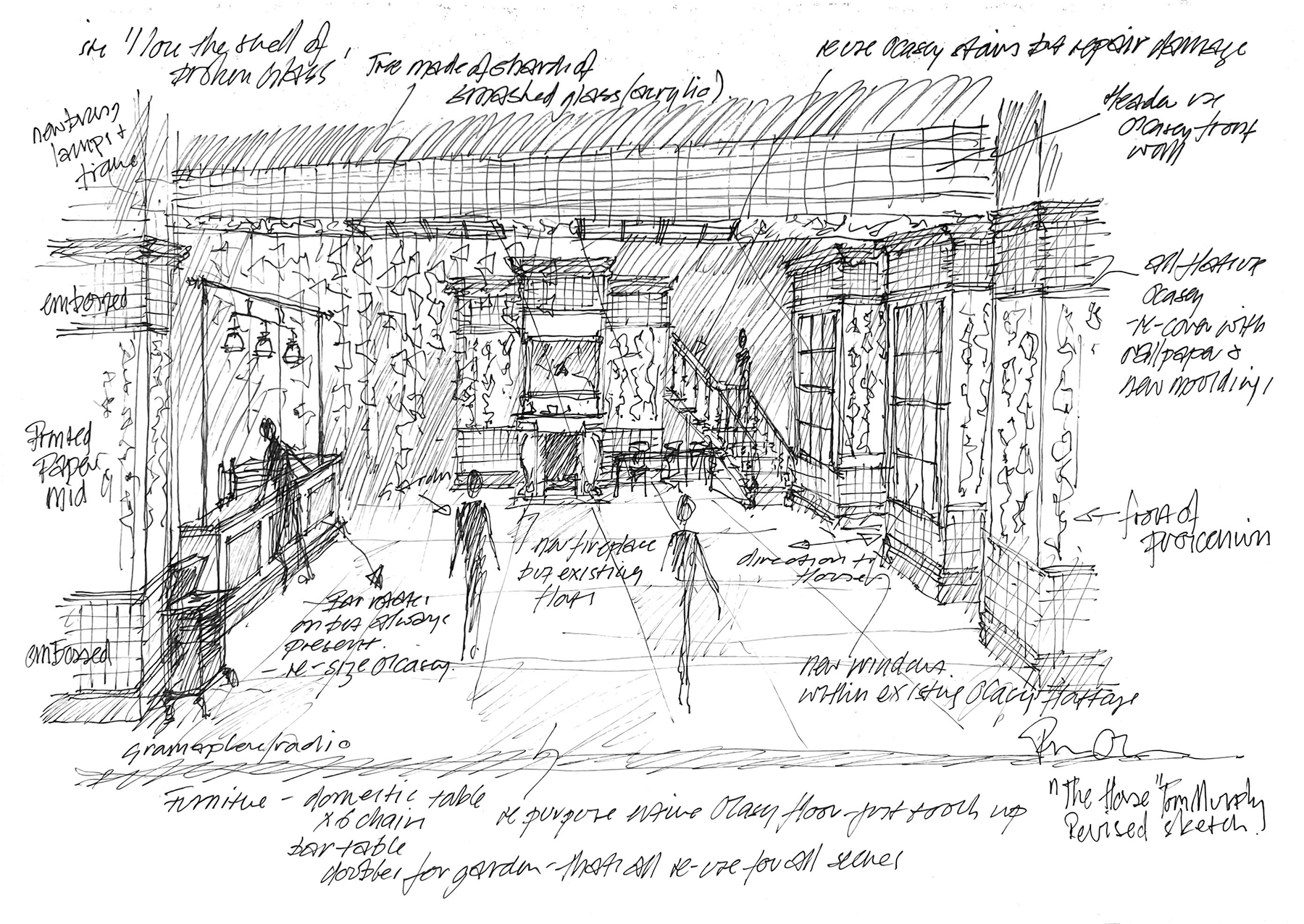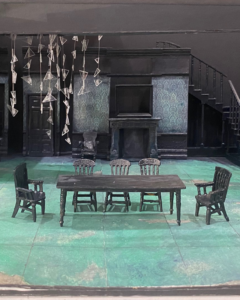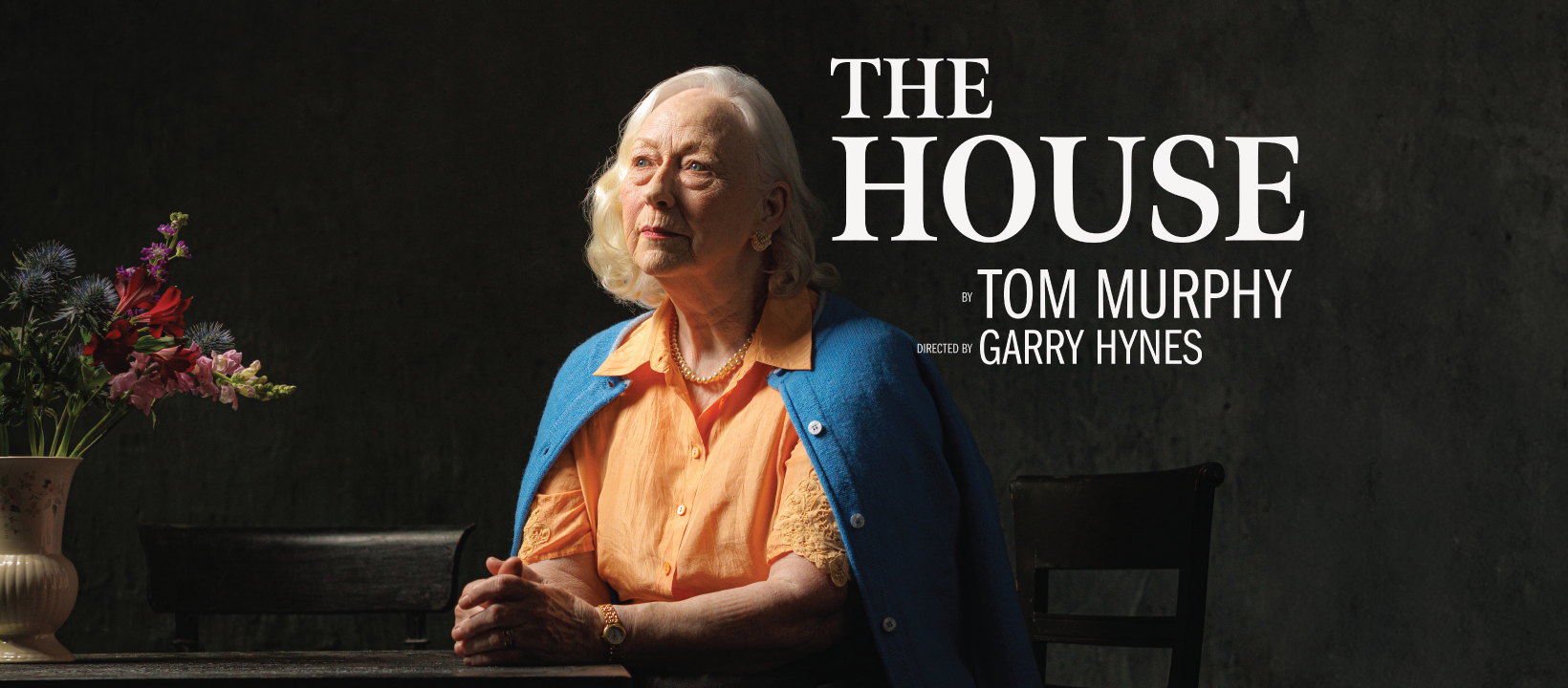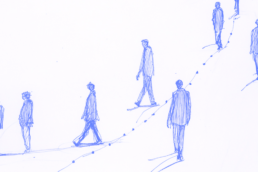Behind the Scenes is a new features series where we’ll get to know ISPD members a little bit better through essays, production diaries, interviews, and more. In this first instalment, Francis O’Connor discusses sustainability and set design for the upcoming production of The House, part of Dublin Theatre Festival 2024.
Building The House
Francis O’Connor
Set and Co-Costume Designer
Week Two of Rehearsals
August 2024
_
Theatre has always been resourceful. Often out of necessity and an instinctive dislike of waste, we’ve reused and repurposed scenery, furniture props and costumes. It has been happening for years, but there is still enormous waste and there’s a renewed sense of responsibility to do something about it.
While I was designing DruidO’Casey, I had in mind that I could create unit pieces that could be repurposed very easily. There’s nothing particularly original in this idea. Sets that could be reused go as far back as Edward Gordon Craig’s famous screens from the early 20th century and perhaps even to the Greeks. In the 1980s, the Citizens Theatre in Glasgow made an entire aesthetic out of reusing and re-shaping sets to amazing effect. My intention for DruidO’Casey was to build a set that could be easily taken apart, recycled or reformed into a new design.
 With The House, we are doing just that: aiming for a set with around 75% recycled materials from DruidO’Casey. I think we will achieve this and we will aim to do even better. The same rigour will be applied to costume and props. The trick, of course, is for this not to limit the imagination or impair what we might do with the design. I don’t feel that has happened, indeed it’s possibly focused some thinking.
With The House, we are doing just that: aiming for a set with around 75% recycled materials from DruidO’Casey. I think we will achieve this and we will aim to do even better. The same rigour will be applied to costume and props. The trick, of course, is for this not to limit the imagination or impair what we might do with the design. I don’t feel that has happened, indeed it’s possibly focused some thinking.
It’s great to revisit The House. I designed the original production at The Abbey in 2000. I loved the play then so it’s a privilege to reimagine it now in 2024.
Garry and I work on the design of the play in advance of rehearsal. The outline of the design is presented as an accurate model box on the first day of rehearsals. It’s the first time the cast get a sense of what the production might become.
As with all the shows we make, the space remains a playground during rehearsals and sometimes things call for a rethink, a new idea. We try to remain flexible to allow for this. I’ve made quite a major change this week. I don’t think that would have been so simple if we hadn’t been reusing and adapting existing scenery.
 The imperative is to keep the play moving so it doesn’t jam against scene changes and, with thirteen separate scenes, that’s a challenge. By keeping all we need on stage it will hopefully allow us to flow between the scenes, almost like a dream perhaps. There won’t be scene changes as such, just movements, adjustments of space.
The imperative is to keep the play moving so it doesn’t jam against scene changes and, with thirteen separate scenes, that’s a challenge. By keeping all we need on stage it will hopefully allow us to flow between the scenes, almost like a dream perhaps. There won’t be scene changes as such, just movements, adjustments of space.
The house itself is almost a character within the play so it has to feel very present, yet the local pub also appears on multiple occasions and that too requires a geography. The design has to deliver the mechanics to allow the play to happen. I’m hoping by reducing things we will actually be able to be more versatile with how the space is shaped.
The bonus about paring things down is you start questioning what you need to tell the story. If we create a vivid enough world, can’t we just use the same furniture across all the scenes? Can we find chairs that will allow this yet be distinctive too? It’s a balance that needs to be carefully considered and that’s exciting. The use of light is going to be particularly important in this story and I’m excited to see how Lighting Designer James F. Ingalls transforms the space.
The play starts in the garden below a tree. The tree is an important image in the play. The decision on how to realise the tree actually helped to free us from naturalism and let the world of the play inhabit a sort of magic realism. Christy has a wonderful line, “I love the smell of broken glass’. That was the trigger for our tree.
It’s all there, you see, in Tom Murphy’s magical words.




